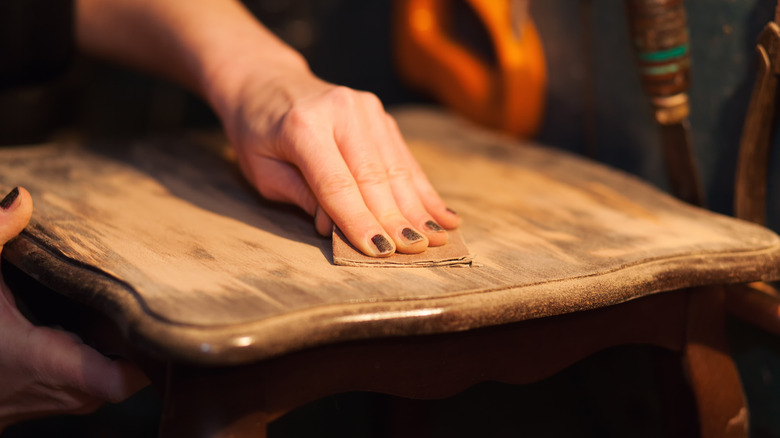You Can Say Goodbye To Sanding Furniture Filler Thanks To A Simple Tape Hack
If you're into rehabbing old furniture, you've probably needed to fill cracks in wood at some point. It's nearly impossible to do this without needing to sand the excess once it's dry; directing the filler perfectly into the crack without spreading it to nearby surfaces is incredibly challenging. Instagrammer Abi Hugo knows the trick to applying smooth, perfect furniture filler, though — and it may have you slapping your forehead in annoyance that you didn't think of it yourself.
Most DIYers know to use tape to create straight painted edges. Why not apply that same concept to applying furniture filler? Line up masking or painter's tape along the edges of a crack before layering on the filler, then peel away the tape to reveal a flawless finish that's ready for painting. If you're painting any kind of wood furniture and need to fill some cracks in beforehand, this tip can be a great time saver. It may even provide a discreet enough mend to take a stain rather than paint.
Take this tip a step further
While we're at it, there are some other ways to adapt this trick to help simplify other DIYs. Why not try this when you're grouting your own tile? Commenters on Hugo's Instagram reel have shared that this trick works like a charm. Don't save it for the bathroom either — try it with pavers as well. In a similar vein, you can also keep caulk in line with a tape barrier on either side of your target.
If you've made mosaics with ceramic pieces that come from a textured item or a figurine, you've probably struggled with removing grout from those surfaces. Struggle no more. You can even turn old coffee mugs into a beautiful mosaic with no fear of getting grout in the nooks with this trick. While the taping process isn't nearly as simple as in other applications, it just takes a little practice. And letting tape catch grout that would otherwise be hard to remove is definitely worth the effort.
